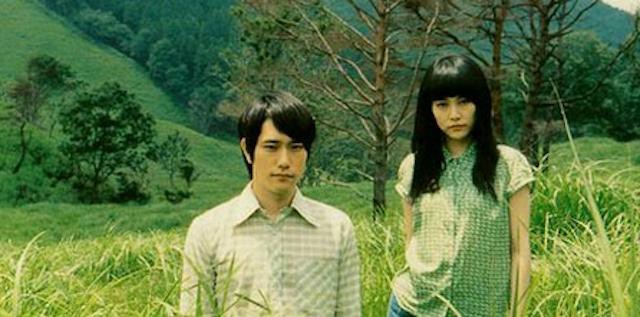What It Cost Me to Climb Mount Fuji
by Jordan Wyn

I spent 8,390 yen ($107, by today’s exchange rate) to climb Mount Fuji, the tallest mountain in Japan. If I’d hiked it two days earlier, I apparently would have run into Hugh Jackman, but alas, since I didn’t, this is just a story about supply and demand. The cost breakdown:
4,950 yen ($63): Mount Fuji trip package, which included a round trip bus ticket from Tokyo, a number to call should we become horribly injured or dead during our climb, and admission to an onsen (hot spring bath) after we got down. The package was strangely cheaper than buying a round trip bus ticket straight from the bus company. Also, since climbing Fuji leads one to be covered in, at minimum, a thin layer of volcanic ash, and reduces one’s muscles to sore useless jelly, the onsen was worth it times a million.
220 yen ($2.80): Two ume onigiri (rice balls with sour pickled plum inside) purchased in Tokyo. Eaten during the hike — I could have used just one more.
700 yen ($8.94): Three stops to the bathroom during the climb. The lower bathrooms are 200 yen and the bathroom at the summit is 300. All of these used the honor system, but if someone is going to be hauling my shit off the tallest mountain in Japan, the least I can do is leave them the money they ask for.
0 yen ($0): The sunrise at the summit. The sky was clear, but the sun disappeared occasionally on its ascent because we were thousands of feet above the clouds.
900 yen ($11.50): Shoyu ramen (ramen noodles, a bit of seaweed, and a bit of bamboo shoot in broth flavored with soy sauce) at the top of Mount Fuji. I’d heard about this noodle restaurant at the summit before I climbed, and while there saw plenty of people buying the famously overpriced 700 yen Cup Noodles. But after seven hours of climbing to almost 13,00 feet, it was the best thing I’ve eaten in my life.
1,500 yen ($19.60): A good luck charm* from the temple at the summit. Usually these charms run 500–1000 yen, but this temple didn’t sell anything under 1,500. Of course, since I just climbed all that way, and it wasn’t something I could ever buy anywhere else, I had to have it. It’s pretty cute though, and damn if I’m not going to take incredibly good care of this little charm.
(* This one was specifically for “achieving your dreams.” Seems pretty apt for something you buy at the top of a ridic tall mountain.)
120 yen ($1.53): Halfsies on a strawberry kakigori (Japanese snow cone) at the onsen. Second best thing I’ve eaten in my life.
0 yen ($0): Passing the hell out after 12 hours of climbing and 31 hours awake. I have never slept so well.
Total: 8,390 yen ($107.37)

Climbing Fuji could, potentially, cost a lot more. Once you arrive at the base of the mountain, the laws of supply and demand enter an entirely new universe. They know they have you. They know you are trapped. And they know that if you really want that refreshing soft drink at 10,000 feet, you will pay for it.
After a six hour climb I found the 900 yen ramen a steal, and in my state of exhaustion and delirium was willing to pay at least twice that much. There are some additional procurement costs for the vendors along the very well-developed Fuji trail, of course. Somebody’s gotta haul that ramen up to the summit, not to mention the pots to cook it in, the water to boil it in, the gas to power the stove to boil the water… and so on. On my climb, I imagined intrepid, entrepreneurial shopkeeps packing their bags full of goods for sale and making the same hike I was. Surely the least that I could do for that effort — not to mention the same effort that others must go to to carry the bathroom waste down — was to shell out a few extra yen.
And then, at the top, I saw a dirt road wending its way from the base to the summit, and a pickup truck pulling in to resupply the restaurant.
Oh well. It was still damn good ramen.
Jordan Wyn is an author and MBA candidate living in Tokyo. A week after climbing Fuji, she can finally walk without making hilarious, pained faces.
Support The Billfold
The Billfold continues to exist thanks to support from our readers. Help us continue to do our work by making a monthly pledge on Patreon or a one-time-only contribution through PayPal.
Comments